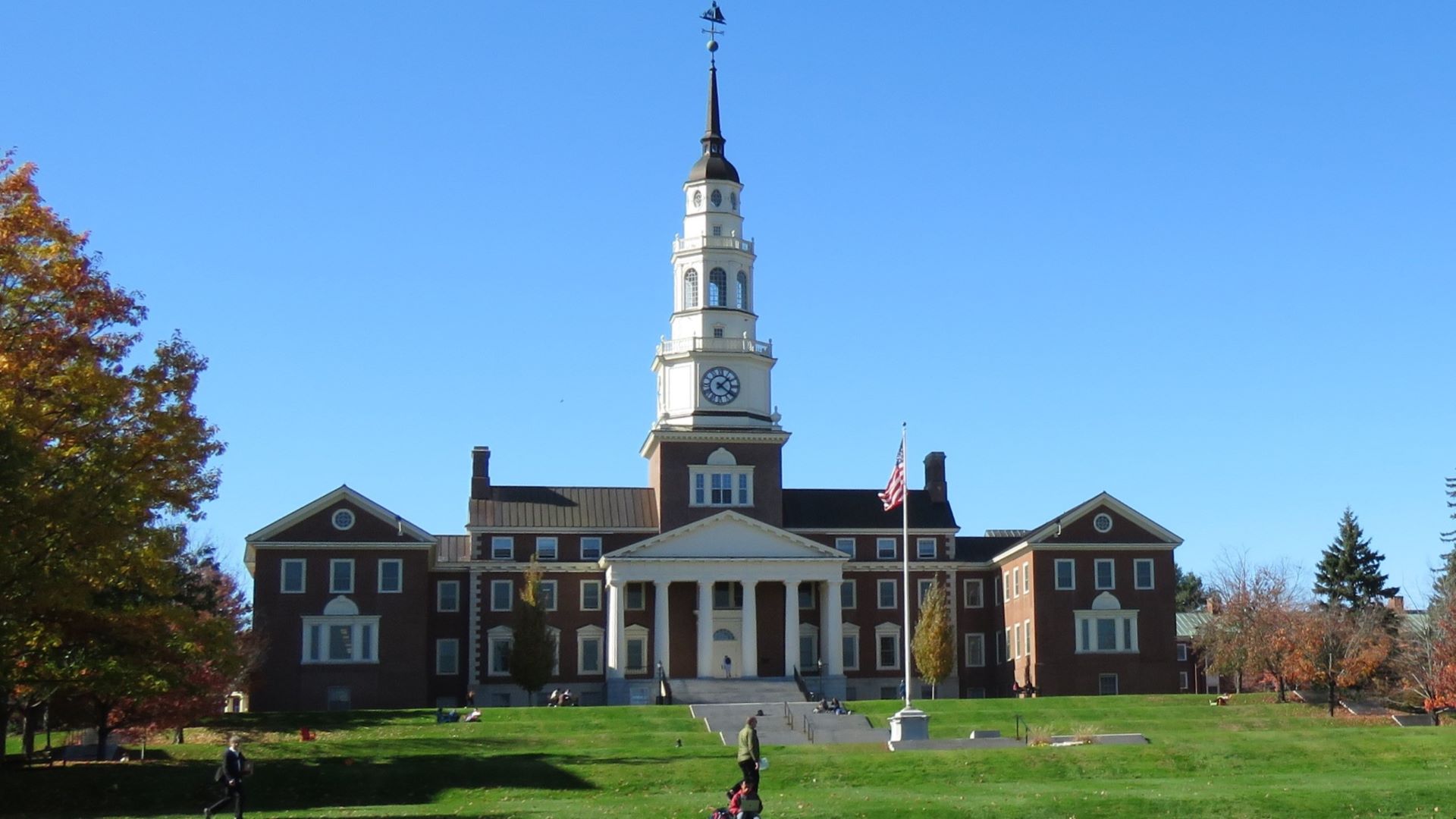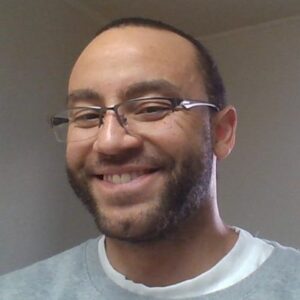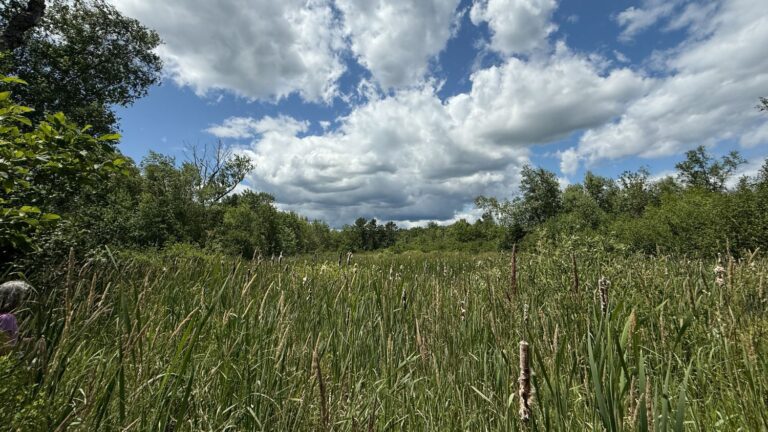“Hey Hylton, they want you in receiving. You’re heading out on some sort of trip,” the officer tells me from the door of my cell. “You know where you’re going, I assume?”
It’s April 2022 and I haven’t left the prison gates since 2010. I have no more appeals, no post-conviction review left to apply for. Unless I need to go to the hospital for something, I shouldn’t see the other side of these prison walls for at least another 26 to 28 years — and that’s if I get every day of my good time.
On this beautiful spring day, I head down to the area of the prison where new people enter the system, get their picture taken for their ID, and are given prison-issued clothing and a plastic tote to store their belongings. I meet two men I have never seen before, who are to be my transport team.
In short order, I’m stripping down to my birthday suit, having each article of my clothing searched before being handed back to me.
“Try these on and see if you can walk without looking like Frankenstein’s monster,” another officer tells me, as I’m introduced to hobblers: leg restraints that strap on under your pants and lock out if you try to run.
“I’m not running anywhere!” I assure my escorts. “You can count on that. I know how big of a deal this is. I know that the Department [of Corrections] is taking a chance on me to make this happen.”
My tone is serious, but my mouth won’t stop smiling. Hobblers on my legs, belly chain getting placed around my waist and affixed to the handcuffs on my wrists, the fugitive investigator is chuckling and shaking his head, saying, “You’re just giddy, aren’t you?”
“You better believe it! I get to see my students today!”
Far from a standard trip to court or the hospital, I’m on my way to Colby College to teach class. On campus. In person.
I have the honor and responsibility of teaching 14 young adults. I get to experience this blessed engagement that I want to make possible for the thousands of other graduate and post-graduate level scholars currently incarcerated across the US.
We believe I am the first incarcerated person to be hired and paid as an adjunct to teach outside college students.
And what powerful students they were! When I close my eyes more than a year later, I can still see the slight widening of Grace’s eyes and the smile that her N95 mask couldn’t hide when I passed her in the hallway before class.
A moment later and I can feel the love, trust, and courage of our little classroom community vibrate through my body, carried on the waves of each student’s voice as they shared what it meant to them to have me as their professor, along with anthropologist Catherine Besteman.
Working as a professor has been a deeply transformative experience, with my students becoming some of my greatest teachers. Before receiving Catherine’s invitation to co-teach the 300-level anthropology course with her, the most I had hoped for was to be a teacher’s assistant.
Now I was halfway through my master’s program at the Jimmy and Rosalynn Carter School for Peace and Conflict Resolution at George Mason University — and 15 years into a 50-year prison bid.
After committing a violent home invasion at 18 years old, I thought my life was over. I took GED classes in county jail in hopes of showing the judge I wasn’t completely worthless. It turns out she didn’t care that I was awarded my GED on the same day she was handing down a de facto life sentence to a 19-year-old.
“If ever I felt like I was protecting society from a predator, today is that day,” the judge told me. “If I could give you more time than this, I would.”
She was sending me to prison for what could easily be the rest of my life and saying she wished she could give me more. I knew I was guilty and the prosecutor wasn’t going to offer me less time, so I signed a plea deal that put a maximum cap on what the judge could give me. Instead of the natural life sentence that my original charges carried, she could *only* give me 50 years in prison.
With that sentence, I lost hope of my former academic dreams of earning a PhD in psychology. I had dreamed of becoming someone who could look other traumatized foster kids in the eye and say, “I’ve been there.”
For all the therapists I was forced to see, none of them could really see me. The one who came closest was the same one who diagnosed me with oppositional defiant disorder and emotional detachment disorder when I was 13. In reality, I had hardened my heart as a response to childhood trauma and abuse.
I needed to heal and grow, but prisons are not designed for that. Across the country, people are fighting for basic access to enriching literature, let alone the opportunity to engage in higher education.
Graduate education — required to teach at the college level — is still unthinkable in many facilities.
In Maine, the explosion of zoom and technological infrastructure during the pandemic has made this possible. The Maine Department of Corrections has gradually opened online access to all college students with no major incidents to date.
By the time I started teaching at Colby, I thought my heart was fully softened. I had spent a dozen years growing up, being mentored, healing spiritually, and giving compassionate hospice service.
Yet, none of that prepared me for the depths of loving vulnerability that Catherine and our students would lead me to. It started with the building of trust between the two of us as we completely reworked the syllabus she had put together for the Carcerality and Abolition course we co-taught.
She was intent on making sure we used class time to thoroughly review the course materials on the history of mass incarceration rooted in slavery and the criminalization of Blackness, up to the need for a cultural paradigm shift away from systemic oppression and towards the cultivation of community safety through abolitionist world building (envisioning the world we want to live in and working to create it).
I, on the other hand, wanted to trust that the students completed the reading and jump straight to the “so what?” question that I learned from Robert Bernheim at University of Maine at Augusta during my undergrad years.
“So, we are learning about all of these tough topics, so what? What does this mean to you personally, professionally, and academically? What do you want to do with this learning?”
And, outside the classroom I would hold office hours (usually, I would be on zoom, Catherine and the students on campus). Week after week, we would tackle tough topics in the classroom, my heart softening each time a student who had started the class shy would open her mouth to share a dissenting opinion, or another student would open up about something he was struggling to accept or understand.
Then, my heart would turn straight to mush when a student would show up in my office hours and share a personal triumph in her trauma healing journey that our class helped facilitate.
It has been through developing loving, trusting relationships with Catherine and our students that I have fully realized what it means for God to take from me my heart of stone and replace it with one of flesh — soft, tender, and loving (Ezekiel 36:26).
Through building community and cultivating healing in an outside classroom, in the same county I committed my crime, my personal transformation has been made complete, where I am no longer fit for prison.
I hope this opportunity for transformative healing will spread across the country. In partnership with Alliance for Higher Education in Prison, we are stepping into remote work here in Maine so that incarcerated people are less of a burden on our families and taxpayers, while finally being able to make meaningful contributions to any fines, fees, restitution, victim compensation, or child support we may owe.
For Colby, I made $6,300 for the semester, the same wage as any visiting instructor on the outside. At the Alliance, I am paid a living wage of $25 per hour which allows me to help support my family and community members, and prepare for my future release. Other colleges, universities, and corrections departments need to follow this precedent for those who share my qualifications.
While prisons exist, they should function to make people not fit for prison — but fit for the community. Creating supportive opportunities for personal, professional, and academic advancement can make this possible.
Taking strategic risks, like allowing a long-term prisoner to teach class on a college campus, helps build a strong, safe bridge home to restoration and redemption.







